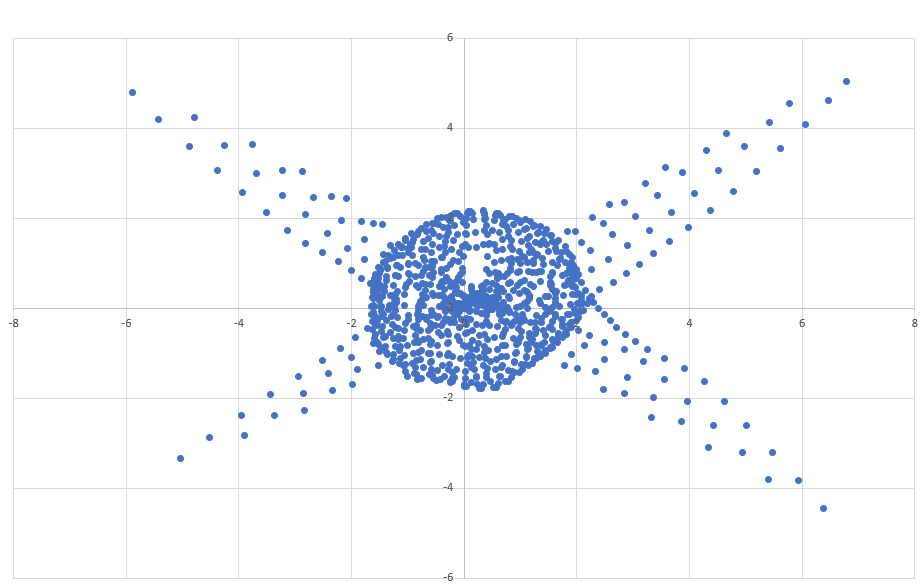Processing the 30 tiles Cygnus mozaic was a bit of a challenge. First there is the logistic of handling about 2,000 frames and then the Borg 55 f3.6 astrograph exhibits strong field distortion making the merge of the images difficult, particularly where the corners overlap.
For each of the 30 tiles I ran the PixInsight processing script (with all the bells and whistles) to a stack. This reduced the data to 30 images.
Then I chose an image with a rich starfield and high quality (low noise, nice tight and round stars, good contrast), plate solved as explained below, calculated the field distortion and stored the generated distortion model in .csv format. Of course I had to plot it, and it looks weird. But as usual in Pixinsight, it is not documented, so who knows… The bottom line is: it works and adequately handles distortion.

From here, I plate solved each of the 30 images, providing the previously calculated distortion model to the solver. With the coordinate of the center of each image being present in the fit header (written at acquisition by Sequence Generator Pro) it should have been an easy task. The problem, however, is the Pixinsight plate solver works reliably only if the image is already solved! No kidding, the Pixinsight Dev team even admits that much, and on their commercial applications they run ansvr before their own plate solver: it’s always easier to find an answer when you already know it. So I followed their lead: first reliably solve the images with a robust solver (ansvr), then solve them again in Pixinsight to update all headers to Pixinsight format and compensate for the pre-calculated distortion model. In passing, another quirk of the Pixinsight plate solver is that it crashes 100% of the time on widefield images if using any of the remote star catalog. So I ended up downloading the PPMX catalog and using that locally.
Once each image is solved and distortion handled, one possible way is to feed everything to Astro Pixel Processor, and sit back for a few hours. If the computer has enough memory, a beautiful mosaic may come on the other side. I am not too sure how to control the projection in APP though, and for a 20 degree super-wide field, it turned out to be sub optimum, the automatic projection over stretching some parts of the result.
So wanting finer control on the final projection (I wanted to use gnomonic), I continued with Pixinsight, following those steps:
- Run plate solve with distortion correction, projection centered on the tile (default, called center of image), not the Mosaics center as one may think.
- Mosaics by coordinate, high quality, rotation set to the intended rotation.
- Gradient Merge Mosaics
- Mure denoise
- Multiscale Denoise


The images are then merged with the gradient merge mosaic.

I ran Mure denoise and then my favorite, Multiscale Denoise.
For Mure I rigorously calculated the parameters based on my camera characteristic, and … nothing worked. So I ended up exploring the parameter space with an increasing range of values, until I got some sensible results. I ended up with the above.